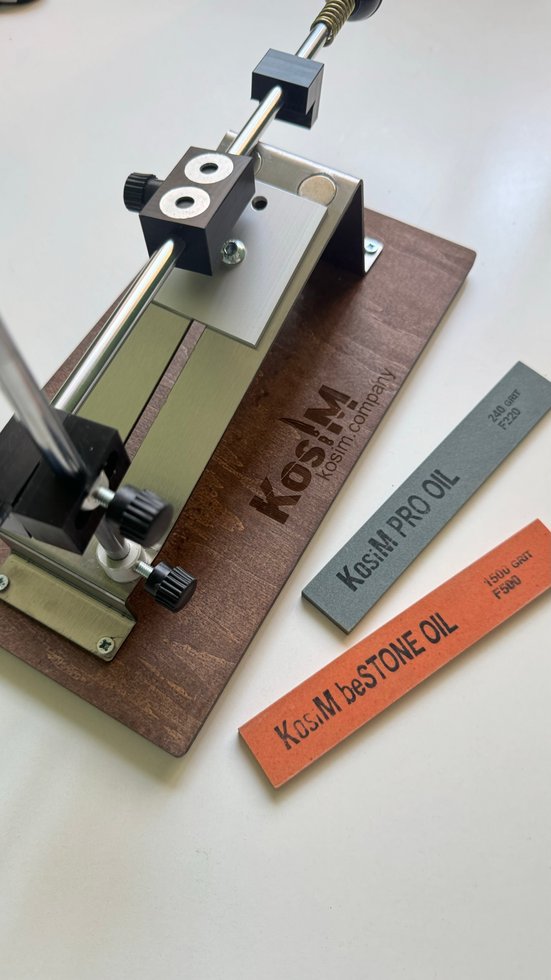|
Quantity
|
Out of stock
|
||
|
|
|||
How does the KosiM adjustable angle sharpener with magnets work?
The principle of operation of the KosiM grinding system with magnets is simple and clear, even for a beginner in sharpening.
Knowing the basic principles of sharpening and a little practice will make it possible to sharpen a knife and other cutting tools to the required sharpness.
The whole process of sharpening on a KosiM sharpener with magnets can be divided into stages:
1. Preparing the sharpener for work:
we fix the vertical stand in the working position, install the bar for sharpening;
2. Install the knife on the magnetic platform.
The cutting edge of the knife is parallel to the end of the sharpener, the blade should protrude slightly beyond the front bend of the sharpener.
We set the stop in the area of the butt of the knife, in order to prevent it from slipping. The thrust plate is not used as a pressure plate! The holding function is performed by magnets with a total capacity of 15 kg.
3. We calculate and adjust the required sharpening angle.
4. We sharpen.
Sharpening is performed by reciprocating continuous movements.
It is impossible to sharpen with perpendicular, circular and movements along the cutting edge.
Do not apply excessive pressure with the stone, this will not make the sharpening process faster. The bar must grind the metal under its own weight.
5. The duration of sharpening depends on many factors.
If sharpening is done to restore sharpness, with a minimum amount of metal removal, sharpening is done until a burr is formed. Then we pass to the other side, then - to the next stone.
If a lot of metal needs to be removed, for example, the formation of the initial sharpening angle, sharpening is carried out conditionally for 3 minutes on each side, several approaches, until the same burr is formed, then as described above.
6. If necessary, sharpen by changing the stones to smaller ones.
7. At the end of the sharpening process, run a sharpened knife along the wooden or plastic block along the grain to remove any residual burr.
After that, it is necessary to make several movements with the finishing stone along the entire cutting edge with movements “away from you”, turning the knife over several times.
8. For the cleanliness of the process, walk several times along the edge of the knife with a bar with smooth skin with movements "toward yourself" so as not to cut.
9. We check the quality of sharpening in one of the ways, for example, cut a sheet of paper with a sharp knife - the knife should not cling to the paper, but slide along it, leaving smooth edges.






